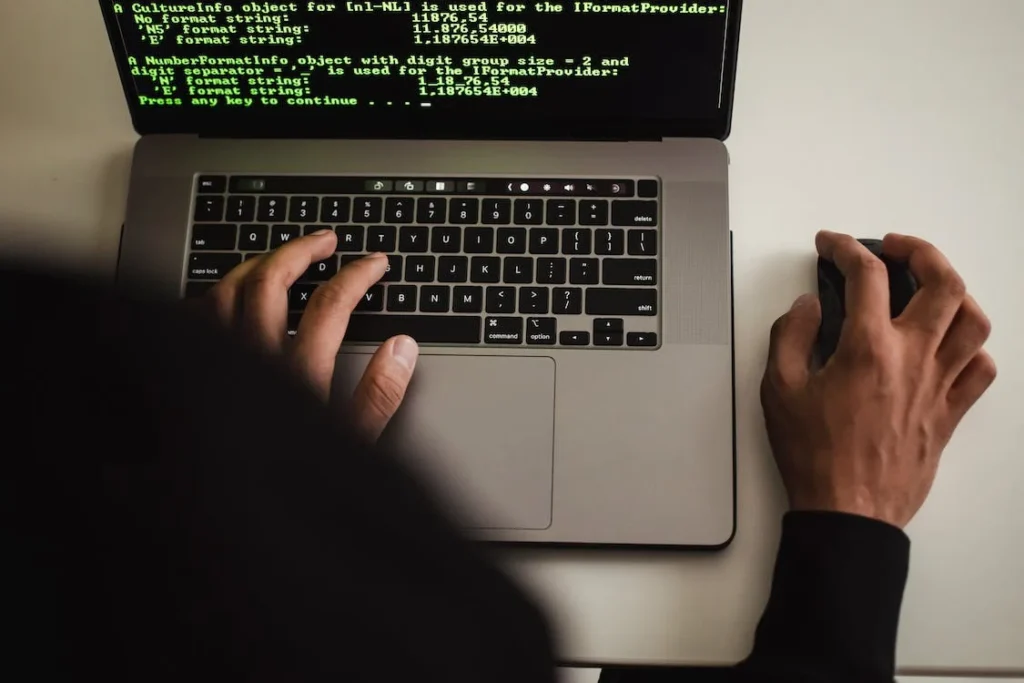Article by Anant Pratap Singh Chauhan, Edited by Chinmay Jain. Article has been edited by the WinSavvy team thereafter to keep it updated.
The COVID-19 pandemic has severely hurt businesses throughout the world. Even in 2022, with supply chain shortages and roaring inflation along with consumer demand at an all-time low, startups and small businesses are finding it extremely difficult to manage their business finances, ensuring they have a predictable cash flow, as well as a stable working capital.
As a result, Finance Minister Nirmala Sitharaman, on 17th May 2020, announced several measures to provide relief to companies, facing insolvency due to the coronavirus pandemic.
Increase in the Minimum Threshold to initiate Insolvency Proceedings
The Central Government used its powers under the proviso to Section 4 of the Insolvency and Bankruptcy Code, to increase the minimum threshold amount, under Section 4 of the Insolvency and Bankruptcy Code, 2016, Rs. 1 crore for the purpose of initiating corporate insolvency resolution process.
- Related Article by the Same Author: How Private Companies Should Manage their Audits
Section 4 of the IBC reads as –
This Part shall apply to matters relating to the insolvency and liquidation of corporate debtors where the minimum amount of the default is one lakh rupees: Provided that the Central Government may, by notification, specify the minimum amount of default of higher value which shall not be more than one crore rupees.
The object of this increase was to benefit and safeguard the startups, which are the Micro Small Medium Enterprises (MSMEs) in India, who are unable to carry on their business functions due to the lockdown imposed and thus are at risk of being insolvent.
Procedure followed in Corporate Insolvency Resolution Process
.png)
Presently, corporate insolvencies are resolved through a two-step process.
The first stage is known as Corporate Insolvency Resolution Process, while the next stage deals with liquidation of the assets of the firm in case a resolution plan which provides for a sustainable revenue model and business model can not be finalized.
Similarly, if the business plan of the startup does not stand up to scrutiny, the startup may very well be sent off for liquidation.
The process of resolving insolvency is discussed below –
#1. Filing of Corporate Insolvency Resolution Process (CIRP) Petition in the National Company Law Tribunal (NCLT)
In case of a minimum default of Rupees 1 crore, the operational or financial creditors of a company may approach the National Company Law Tribunal and file a petition for the initiation of the Corporate Insolvency Resolution Process (CIRP), as provided under Sections 7 and 8 of the IBC, 2016.
A financial creditor has been defined under Section 5(7) of the IBC, 2016 as –
a person to whom a financial debt is owed and includes a person to whom such debt has been legally assigned or transferred.
Financial debt has been defined under Section 5(8) of the IBC, 2016 as–
a debt along with interest, if any, which is disbursed against the consideration for time value of money and includes-
- Money borrowed against payment of interest;
- Any amount raised by acceptance under any acceptance credit facility or its de-materialized equivalent;
- Any amount raised pursuant to any note purchase facility or the issue of bonds, notes, debentures, loan stock or any similar instrument;
- The amount of any liability in respect of any lease or hire purchase contract which is deemed as a finance or capital lease under the Indian Accounting Standards or such other accounting standards as may be prescribed;
- Receivable sold or discounted other than any receivable sold on non-recourse basis;
- Any amount raised under any other transaction, including, any forward sale or purchase agreement, having the commercial effect of borrowing;
- Any counter-indemnity obligation in respect of a guarantee, indemnity, bond, documentary letter of credit or any other instrument issued by a bank or financial institution;
- The amount of any liability in respect of any of the guarantee or indemnity for any of the items referred to in sub-clauses (a) to (h) of this clause.“
An operational creditor has been defined under Section 5(20) of the IBC, 2016 as –
a person to whom an operational debt is owed and includes any person to whom such debt has been legally assigned or transferred.
Operational debt has been defined under Section 5(21) of the IBC, 2016 as –
a claim in respect of the provision of goods or services including employment or a debt in respect of the repayment of dues arising under any law for the time being in force and payable to the Central Government, any State Government or any local authority.
The difference in procedure for a financial and operational creditor is that the operational creditor has to deliver a notice to the corporate debtor, which the latter has to reply within 10 days, after which, the insolvency proceedings could be initiated, as provided under Section 8 of the IBC, 2016.
Financial vs Operational Debt vis-à-vis Contracts
In case, you enter into commercial agreements, such as a finance lease, sub-lease or a manufacturing contract and default on payment under these contracts, then it is an operational debt that you are defaulting on.
However, if you take loans and enter into similar agreements such as a mortgage agreement, and default on paying as under the contract, then you are defaulting on a financial debt.
#2. Acceptance or Rejection of the Corporate Insolvency Resolution Process (CIRP) petition by the National Company Law Tribunal (NCLT)
The National Company Law Tribunal (mentioned as the Adjudicating Authority under the Code), may accept or reject the petition within 14 days of its receipt.
If rejected, the Corporate Insolvency Resolution Proceeding will be dismissed.
If accepted, the proceedings would continue further. The debtor in question would be placed on a moratorium period, during which, the following would be prohibited in connection to the debtor –
- the institution of suits or continuation of pending suits or proceedings against the corporate debtor including execution of any judgment, decree or order in any court of law, tribunal, arbitration panel or other authority;
- transferring, encumbering, alienating or disposing of by the corporate debtor any of its assets or any legal right or beneficial interest therein;
- any action to foreclose, recover or enforce any security interest created by the corporate debtor in respect of its property including any action under the Securitisation and Reconstruction of Financial Assets and Enforcement of Security Interest Act, 2002;
- the recovery of any property by an owner or lessor where such property is occupied by or in the possession of the corporate debtor.
The moratorium period would continue until the insolvency proceedings end.
#3. Appointment of an Interim Insolvency Professional
Upon admission of the petition, the NCLT would appoint an Interim Resolution Professional, within 14 days of the admission of the petition, who would take over the management of the corporate debtor and appoint a Committee of Creditors (CoC), which would include only the financial creditors.
It should be noted that at this juncture, the control of the company ceases to remain in the hands of the appointed directors.
The directors of the corporate debtor including the independent directors as well as the key managerial personnel would report to the Interim Resolution Professional and the latter would act in the debtor’s name and may collect information in relation to the functioning of the corporate debtor. The term of the Interim Resolution Professional shall not exceed 30 days.
#4. Appointment of a Resolution Professional by the Committee of Creditors
The Committee of Creditors would, within the 30 days term of the Interim Resolution Professional, appoint a Resolution Professional.
The name of such a proposed Resolution Professional would be sent to the NCLT for confirmation, who would in turn, forward it to the Insolvency and Bankruptcy Board of India, after confirmation from which, the person would be appointed as the Resolution Professional.
This Resolution Professional will function throughout the duration of the Corporate Insolvency Resolution Process.
#5. Preparation and Acceptance of Resolution Plan
The resolution plan for the corporate debtor will be formulated in this stage. The Resolution Professional invites applicants to formulate the resolution plan and the applicant is further confirmed by the Committee of Creditors.
Any party may be an applicant to file the resolution plan except the corporate debtor or any of its guarantors. The Committee of Creditors shall then approve or disapprove the resolution plan.
#6. Submission of the Resolution Plan to the NCLT
After the resolution plan has been accepted by the Committee of Creditors, it is submitted to the National Company Law Tribunal.
The Committee of Creditors has to submit the resolution plan within 180 days of the commencement of the Corporate Insolvency Resolution Process, which may be extended to 270 days with the consent of the NCLT.
In case, the NCLT does not receive a resolution plan within the specified duration or if the resolution plan fails, it shall initiate the liquidation procedure immediately.
Changes in Certain Provisions of the Insolvency and Bankruptcy Code, 2016

During the beginning of the COVID-19 pandemic, the Central Government suspended Sections 7, 9, and 10 of the Bankruptcy Code for a period of one year, which ended on March 24, 2021.
Section 7(1) of the IBC reads as –
A financial creditor either by itself or jointly with other financial creditors may file an application for initiating corporate insolvency resolution process against a corporate debtor before the Adjudicating Authority when a default has occurred.
Section 8(1) of the IBC reads as –
An operational creditor may, on the occurrence of a default, deliver a demand notice of unpaid operational debtor copy of an invoice demanding payment of the amount involved in the default to the corporate debtor in such form and manner as may be prescribed.
Section 10(1) of the IBC reads as –
Where a corporate debtor has committed a default, a corporate applicant thereof may file an application for initiating corporate insolvency resolution process with the Adjudicating Authority.
Presently, in case of a default exceeding 90 days, the concerned lender may go for resolution under the IBC or any other mechanism allowed by the RBI.
Exclusion of Lockdown time period for the purpose of Corporate Insolvency Resolution Process
The National Company Law Appellate Tribunal (NCLAT) also excluded the period of lockdown, imposed by the Central and respective State Governments, for the purpose of counting of the period for corporate insolvency resolution process (CIRP) provided under Section 12 of the Code.
Thus, the period of lockdown would not be included in 180 or 270 days provided for CIRP.
Insertion of regulation 47A under IBBI (Liquidation Process) Regulation
The Insolvency and Bankruptcy Board of India inserted regulation 47A under the IBBI (Liquidation Process) Regulation.
The new regulation excluded the time-period of lockdown for any task, which could not be completed due to the lockdown, in relation to any liquidation process.
The regulation read as –
47A. Subject to the provisions of the Code, the period of lockdown imposed by the Central Government in the wake of COVID-19 outbreak shall not be counted for the purposes of computation of the time-line for any task that could not be completed due to such lockdown, in relation to any liquidation process.
Faster Redressal of Grievances against Insolvency Professionals
The Insolvency and Bankruptcy Board of India also amended the Insolvency and Bankruptcy Board of India (Grievance and Complaint Handling Procedure) Regulations, 2017 and the Insolvency and Bankruptcy Board of India (Inspection and Investigation) Regulations, 2017 so as to revamp the grievance redressal mechanism.
The amended rules have now revised several deadlines with regard to its process of looking into and enforcing grievance redressals.
Impact on Startups due to the COVID-19 Pandemic
Due to the imposition of lockdown for preventing against the pandemic, businesses and the whole economy, in general, have suffered a lot of damage.
Particularly, severe damage has been faced by Indian Start-ups with nine out of ten start-ups registering a decline in revenues and over 35% may have to halt operations, either temporarily or permanently.
The worst-hit sector is B2C, with over 60% of the start-ups are facing closure owing to the pandemic. 92% of the start-ups have reported a decline in the revenue, with around 70% of start-ups facing a cash crunch and expect to have liquidity for a little over three months.
In the travel and tourism sector, 70% of the start-ups had seen a revenue dip by over 40%, while 50% of the start-ups in the logistics sector have seen a similar dip in revenue.
Although the economy has opened up, it’s not all clear, considering the sky-high inflation and low consumer demand. Startup funding is also going slow, with most startups having to opt for bootstrapping.
If possible, you should try and search for foreign funding by MNCs as FDI is fortunately at an all-time high, with several manufacturing businesses looking to invest in India and localize their business operations in India.
Related Reads:
Opening up a financing business can be pretty lucrative in India as of now. Here are some of your options –
Rise of Platform Business Models
Businesses have resorted to using platform business models to serve more customers as well as for their hiring needs. Outsourcing is pretty trendy right now.
Plus it can help you cut your costs and save your business a lot of expenses.
According to a survey done by us, a ton of business are opting for outsourcing their SEO work as well as their digital marketing needs to digital marketing agents. If your business is going insolvent, it can be a great way to turnaround your startup.
Wrapping it Up
Hope you liked the piece. If you have any thoughts, let us know in the comments. Also, do give this piece a share among your connections, if you think anyone might benefit from this article!
Read Next:
- How to Create an LLC in the US
- Data Privacy Laws in India and How they Impact Businesses
- How Indian Businesses Should Protect Customer Data as per the Information Technology Act, 2000
Author Bio: Anant Pratap Singh Chauhan is a BA,LLB(H) student from Aligarh Muslim University and an ex-intern at WinSavvy. Connect with him on LinkedIn.
Editor Bio: Chinmay Jain is a BA.LLB(H) student from Institute of Law, Nirma University, and an ex-intern at WinSavvy. Connect with him on LinkedIn.





















